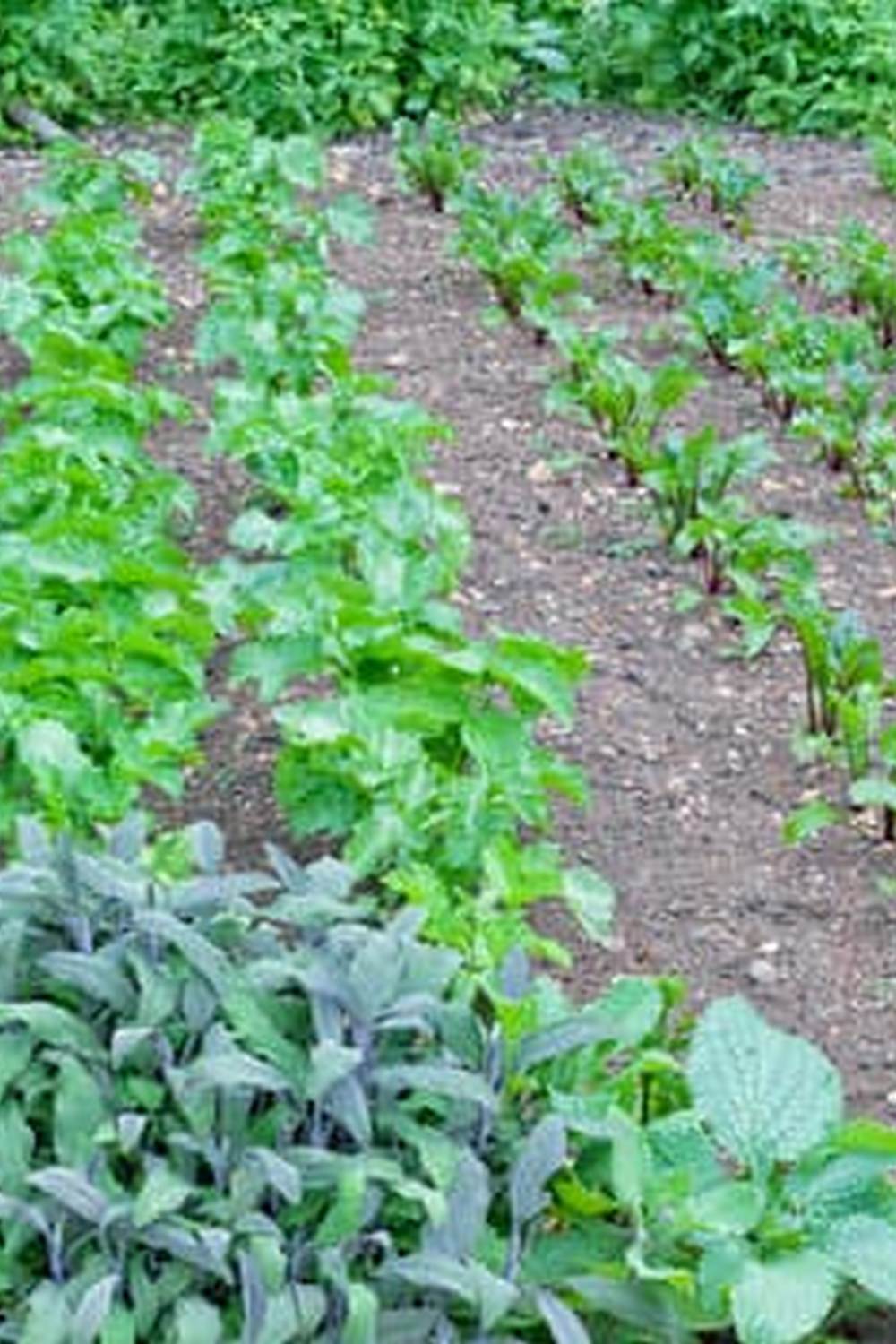by exploring the process of pressure treating wood and the potential risks and benefits associated with it. By the end of this article, you will have a better understanding of whether Lowes pressure treated wood is a suitable option for your vegetable garden.
Pressure treated wood is a type of lumber that has been infused with preservatives to protect it from decay, insects, and other forms of damage. While this treatment makes the wood more durable and long-lasting, there are worries about the chemicals used in the process seeping into the soil and harming plants or potentially posing health risks to those consuming food grown in close proximity to the treated wood.
Throughout this article, we will address these concerns and provide information on whether Lowes’ products meet safety standards for use in vegetable gardens.
In addition to examining specific products offered by Lowes, we will also discuss alternative options for building garden beds and offer tips for safe use of pressure treated wood in vegetable gardens. Whether you are new to gardening or an experienced green thumb, it is crucial to understand the potential risks involved in using pressure treated wood and make informed decisions to ensure the safety of your vegetable garden.
Understanding Pressure Treated Wood
Pressure treated wood is a type of lumber that has been infused with chemical preservatives. This treatment process involves placing the wood in a pressurized chamber where the preservatives are forced deep into the wood fibers, helping to protect it from decay, insects, and fungal growth. The most common chemicals used in pressure treating wood are copper-based, with some formulations also including additional elements such as chromium and arsenic.
The use of pressure treated wood has become increasingly popular for outdoor construction projects, including garden beds for vegetable gardens, due to its durability and resistance to decay. Pressure treated wood is an attractive option for gardeners looking for long-lasting materials to use in their vegetable garden beds.
It’s important to note that while pressure treated wood offers many benefits, there are also potential risks associated with its use, especially in close proximity to edible plants. The chemicals used in the pressure treating process can leach out over time, posing a risk of contamination to soil and plants. Ingestion of these chemicals through consumption of vegetables grown in contact with pressure treated wood is a concern for many gardeners.
Despite the potential risks, there are measures that can be taken to minimize the impact of using pressure treated wood in vegetable gardens. For example, lining the inside of the garden bed with a plastic barrier can help prevent direct contact between the soil and the treated wood. Additionally, sealing or covering the exposed surfaces of pressure treated wood can further reduce the risk of chemical leaching.
| Pressure Treated Wood Benefits | Risks Associated |
|---|---|
| Durability | Chemical leaching into soil |
| Resistance to decay and insects | Potential risk to edible plants |
Risks of Using Pressure Treated Wood in Vegetable Gardens
Pressure treated wood has been a popular choice for building garden beds and other outdoor structures due to its durability and resistance to decay. However, there are potential risks associated with using pressure treated wood in vegetable gardens that need to be carefully considered.
Understanding the potential risks of using pressure treated wood in vegetable gardens is crucial for making informed decisions about the safety of your gardening practices. Here are some important considerations:
- Chemical Leaching: The chemicals used in the pressure treating process, such as arsenic, chromium, and copper, can leach into the soil over time, potentially contaminating the plants and impacting their growth.
- Food Safety Concerns: There is a concern that vegetables grown in raised beds made of pressure treated wood may absorb harmful chemicals from the wood, which could pose health risks when consumed.
- Environmental Impact: The use of pressure treated wood in vegetable gardens can have environmental implications as well. The leaching of chemicals into the soil can affect local ecosystems and wildlife.
Considering these potential risks, many gardeners have expressed concerns about whether Lowes pressure treated wood is safe for use in vegetable gardens. It is essential to evaluate specific products offered by Lowes and understand the safety measures taken by the company in pressure treating their wood. Additionally, seeking evidence or testimonials from successful vegetable gardens using Lowes pressure treated wood can provide valuable insights into its safety for use in vegetable gardens.
Ultimately, when considering whether to use pressure treated wood in your vegetable garden, it’s important to weigh the potential risks against the benefits of using this material. With proper precautions and informed decision-making, it is possible to minimize the risks associated with using pressure treated wood while still enjoying its advantages.
Is Lowes Pressure Treated Wood Safe for Vegetable Gardens?
Lowes is a popular destination for all kinds of home improvement needs, including pressure treated wood for gardening projects. Many people wonder whether Lowes’ pressure treated wood is safe for vegetable gardens. The answer to this question depends on various factors, including the specific products offered by Lowes and the precautions taken in the pressure treating process.
When it comes to using pressure treated wood in vegetable gardens, it is essential to consider the potential risks and benefits. Lowes offers a range of pressure treated wood products, including boards and timbers commonly used for building garden beds. It is important to evaluate the specific types of treatments used by Lowes and determine whether they are safe for organic gardening practices.
As you explore the options available at Lowes, consider these factors:
- The type of treatment used: Look for information on whether the pressure treated wood contains chemicals that could be harmful to plants or soil.
- Customer testimonials: Seek out reviews or testimonials from other gardeners who have used pressure treated wood from Lowes in their vegetable gardens.
- Safety measures: Inquire about any safety measures implemented by Lowes in the pressure treating process to minimize environmental impact and health risks.
Ultimately, while there may be concerns about using pressure treated wood from retailers like Lowes in vegetable gardens, with careful consideration and research, it is possible to make an informed decision about whether it is safe for your specific gardening needs.
Alternative Options for Vegetable Garden Beds
When it comes to building vegetable garden beds, pressure treated wood may not be the best option due to potential risks to plants, soil, and food safety. For this reason, many gardeners are looking for alternative options for constructing their garden beds that are safe and non-toxic.
Alternative Materials
One popular alternative to pressure treated wood for vegetable garden beds is cedar. Cedar is naturally resistant to rot and insects, making it a durable and long-lasting choice for garden construction. Other options include composite lumber, which is made from a blend of wood fibers and recycled plastic, as well as natural stone or concrete blocks.
Pros and Cons
Each alternative material has its own set of pros and cons. While cedar is naturally resistant to decay and insects, it can be more expensive than other types of wood. Composite lumber is low-maintenance and durable, but it may not have the same natural look as wood. Stone or concrete blocks are extremely durable but can be heavy and difficult to work with.
Tips for Making an Informed Decision
When selecting an alternative material for your vegetable garden beds, consider factors such as cost, durability, maintenance requirements, and overall aesthetic appeal. It’s important to weigh the pros and cons of each option before making a decision. Consulting with experts at your local home improvement store or nursery can also provide valuable insight into which material will best suit your needs.
Ultimately, there are numerous alternative options available for building vegetable garden beds that are safe for growing food and will provide a healthy environment for your plants. By carefully considering the materials available and making an informed decision based on your specific needs, you can create a sustainable and productive vegetable garden without the use of pressure treated wood.
Tips for Safe Use of Pressure Treated Wood in Vegetable Gardens
Pressure treated wood is a popular choice for building garden beds due to its resistance to rot and insects. However, many gardeners are concerned about the safety of using pressure treated wood in vegetable gardens. The process of pressure treating wood involves impregnating it with chemicals to increase its durability and longevity, which raises questions about the potential risks to plants, soil, and food safety.
One of the main concerns when using pressure treated wood in vegetable gardens is the leaching of chemicals into the soil. The chemicals used in pressure treating wood include copper compounds and various types of biocides to prevent decay and insect damage.
These chemicals can potentially leach into the soil over time, posing a risk to plant health as well as food safety. Research has shown that certain chemicals from pressure treated wood can be absorbed by plants and accumulate in edible parts such as fruits and vegetables.
When considering whether Lowes pressure treated wood is safe for vegetable gardens, it is important to evaluate the specific products offered by Lowes and their safety measures in pressure treating wood. Many retailers, including Lowes, offer products that are specially formulated for use in raised garden beds and other applications where contact with edible plants is likely.
These products are often certified as safe for use around food crops and have undergone rigorous testing to ensure minimal leaching of harmful chemicals.
It is important for gardeners to take precautions when using pressure treated wood in vegetable gardens. Sealing or covering the wood with a plastic liner can help prevent direct contact between the soil and the treated wood, reducing the risk of chemical leaching.
Additionally, wearing gloves and a mask when handling pressure treated wood, as well as following proper installation and maintenance guidelines provided by the manufacturer, can help minimize potential risks. By staying informed about regulations and safety standards for pressure treated wood, gardeners can make informed choices for their vegetable gardens while minimizing potential risks to plant health and food safety.
| Concerns | Safety Measures |
|---|---|
| Potential chemical leaching into soil | Use specially formulated products certified as safe for use around food crops |
| Risk of chemical absorption by plants | Seal or cover the wood with a plastic liner to prevent direct contact with soil |
| Harmful effects on food safety | Follow proper installation and maintenance guidelines provided by manufacturer |
Regulations and Safety Standards
Understanding the Regulations
It is important to understand that the use of pressure treated wood in vegetable gardens is regulated by various government agencies. These regulations are in place to ensure the safety of consumers and the environment.
The United States Environmental Protection Agency (EPA) sets standards for the use of chemicals in pressure treated wood, including the maximum allowable levels of certain substances. Additionally, there may be specific regulations at the state or local level that gardeners should be aware of before using pressure treated wood in their vegetable gardens.
Safety Standards for Pressure Treated Wood
In addition to regulations, there are safety standards that manufacturers must adhere to when treating wood with chemicals. This includes guidelines for the proper handling and disposal of pressure treated wood to minimize risks to human health and the environment. These standards also address labeling requirements to inform consumers about the potential hazards associated with pressure treated wood and provide instructions for safe use.
Staying Informed and Cautious
As a responsible gardener, it is crucial to stay informed about the latest regulations and safety standards related to pressure treated wood. Keeping up-to-date with any changes or developments in this area can help you make informed decisions about using pressure treated wood in your vegetable garden. Additionally, always exercise caution when handling and using pressure treated wood, following all safety recommendations provided by both regulatory agencies and manufacturers.
By understanding and following these regulations and safety standards, you can make educated choices about whether Lowes’ pressure treated wood is safe for your vegetable garden.
Conclusion
In conclusion, when it comes to the question “Is Lowes pressure treated wood safe for vegetable gardens?” the answer is not straightforward. Pressure treated wood involves using chemicals such as alkaline copper quaternary (ACQ) or copper azole to protect against decay and insect damage. While these chemicals can pose potential risks to plants, soil, and food consumption, Lowes has taken measures to ensure the safety of their pressure treated wood products for use in vegetable gardens.
Lowes offers a variety of pressure treated wood products that are specifically labeled as safe for use in vegetable gardens. These products have undergone treatments that minimize the risks associated with chemicals leaching into the soil and ultimately affecting plant growth or food safety. Many individuals have reported successful experiences using Lowes pressure treated wood in their vegetable gardens, further reinforcing its safety and effectiveness.
With that said, it’s important for gardeners to make informed choices for their vegetable gardens. Alternative options such as cedar, redwood, or composite materials are available for building garden beds without the use of pressure treated wood. It’s essential to weigh the pros and cons of each material and consider factors such as cost, durability, and environmental impact before making a decision.
Additionally, following guidelines for minimizing risks when using pressure treated wood, such as sealing or covering the wood and practicing safe handling and maintenance, is crucial for ensuring a safe gardening experience. Ultimately, staying informed and cautious about regulations and safety standards for pressure treated wood will help gardeners make the best choices for their vegetable gardens.
Frequently Asked Questions
Is Lowe’s Pressure Treated Wood Safe for Vegetable Gardens?
Using pressure treated wood in vegetable gardens is a matter of debate. Some experts argue that the chemicals used to treat the wood can leach into the soil and then be absorbed by the plants, potentially affecting their safety for consumption.
Can You Use Pressure Treated Wood in Vegetable Gardens?
It’s generally recommended to avoid using pressure treated wood in vegetable gardens where edibles will be grown. The chemicals in the wood, such as copper compounds and arsenic, can potentially contaminate the soil and pose a risk to the vegetables being grown.
Is Home Depot Pressure Treated Wood Safe for Vegetable Gardens?
Home Depot pressure treated wood may contain similar chemicals to those found in Lowe’s pressure treated wood, so it raises similar concerns about its safety for use in vegetable gardens. Many gardeners opt for untreated or naturally rot-resistant woods like cedar or redwood when building raised beds for growing edibles.

If you’re looking to get into vegetable gardening, or are just looking for some tips on how to make your current garden better, then you’ve come to the right place! My name is Ethel and I have been gardening for years. In this blog, I’m going to share with you some of my best tips on how to create a successful vegetable garden.





